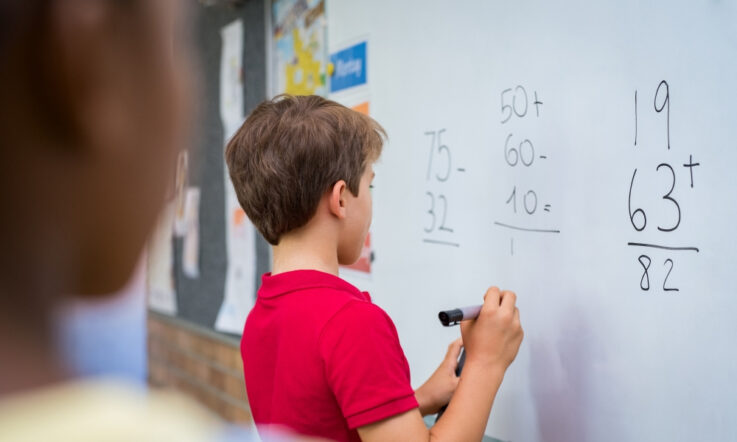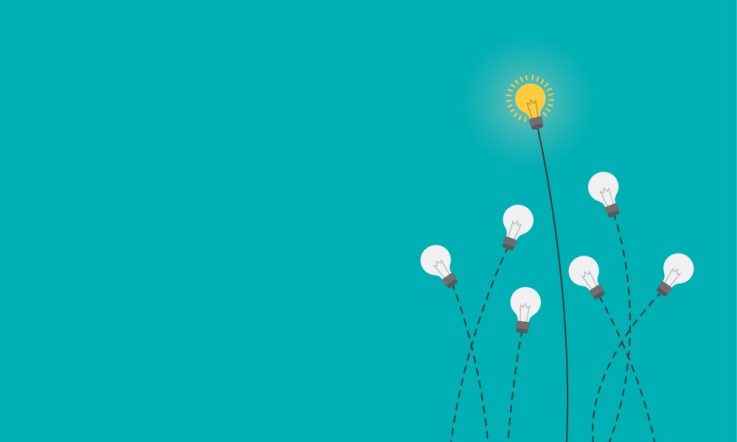Hello, and thanks for downloading this episode of Teacher Staffroom, where we catch you up on the latest evidence, insight, and action. I'm Dominique Russell.
A few reports have been released lately which point to how we're tracking across the world when it comes to equality and equity in education. At Teacher, we've looked a report showing how the experiences of young people living with a disability and without a disability compare. We also highlighted some resources on Indigenous literacy, in the lead up to Indigenous Literacy Day, which aims to improve remote Indigenous children's educational outcomes.
Like all episodes of Teacher Staffroom, I'll take you through these topics, along with other noteworthy stories in education. I'll also be posing some questions throughout this podcast, so feel free to pause the audio as you go, gather some colleagues and discuss together how these stories could be relevant to your school context. Let's jump in.
The first piece I'd like to bring your attention to is one I thought brought up some really important, striking points. An infographic we published looked at some of the findings from a report by Mission Australia, which is an Australian charity. Young people between the ages of 15 and 19 were surveyed on topics like issues of personal concern, inclusion and their post-school plans.
The report's authors highlighted the differences between the responses of young people who reported living with a disability, and those who didn't. One stark difference was that more than double the number of people without a disability intend to complete Year 12, compared to those with disability – the specific percentages for that was 8.2 per cent compared to 3.8 per cent.
When it comes to bullying, 19.5 per cent of young people without disability reported being physically bullied in the past 12 months. That's in comparison to 34.1 per cent of students who reported living with a disability. Another interesting finding was that 45.5 per cent of respondents living with a disability are extremely or very concerned about their mental health, compared to 32.4 per cent of those who live without a disability.
Another piece published on Teacher which focused on mental health came from Julia Gillard. She wrote about how schools in Australia have been focusing a lot on mental health and wellbeing during this pandemic and also shared some resources to support staff, students and families. In the article, she spoke about how strong relationships underpin resilience and wellbeing. In particular, she had this to say:
…Focusing on relationships, even in small ways like asking a student about their weekend, can play a big role in supporting a student's mental health and wellbeing, including their ability to be resilient and continue to learn. When we feel supported, we are in a better position to cope with difficult experiences.
She also gave some specific recommendations for things like handling difficult conversations with students, families or colleagues; and fostering a sense of belonging in your school community. A link to Julia's article, will be in the transcript of this podcast so you can explore her recommendations in more detail. You'll find the transcript at our website, teachermagazine.com.au, under the podcast tab.
Another survey myself and my colleague, Rebecca Vukovic, had a closer look at for Teacher was on the topic of news consumption by young Australians. What I found most interesting about this report was the timing of the survey they did – it was conducted in February and March of this year, that was at the tail end of the bushfire crisis in Australia and just as the COVID-19 pandemic was beginning – two events which had Australians glued to the news.
Young people between the ages of eight and 16 were asked about their level of trust in news sources, how they decipher fake news and how they feel when they consume news. The report's lead author, Tanya Notley, had this to say about the survey findings:
One challenge educators have is that while one half of young people aged eight to 16 say that getting news is important to them, a third say it is not. And some of that one third are active news avoiders. They want to leave it up to adults to tell them the news they need to know.
I think that's a really interesting point there, so I'd like to pose a question to you about that topic.
Think about the students in your class and their news consumption. Where do they typically consume news? Are they able to tell the difference between real and fake news? Can they critically analyse the news they read, watch or listen to? How can you and your colleagues better support them to do this?
If you'd like to explore more of the findings from this report, we also published an infographic on it. You'll find a link to that in the transcript of this podcast.
You might have also seen a new report on data gathered from Australia from their participation in the Teaching and Learning International Survey, otherwise known as TALIS. TALIS asks teachers and school leaders about working conditions and learning environments at their schools. Quite often, we see how equity and equality are addressed across the globe. In fact, we have a video infographic that goes over what was found in terms of equity and diversity in the latest TALIS cycle.
This new report focuses on Australian data from that same survey cycle. We heard from Dr Sue Thomson, a Teacher columnist who unpacked what this latest report shows. It looked at the stress level among teachers, and brought up some interesting realities. However, keep in mind, this was before the COVID-19 pandemic, so the current reality might look quite different. Sue had this to say about the level of stress among teachers in Australia:
For the first time in TALIS, the 2018 survey asked teachers how much they experience stress in their work (not at all; to some extent; quite a bit; a lot). Almost six in 10 Australian teachers (58 per cent) reported feeling quite a bit or a lot of stress in their jobs, significantly higher than the average across participating OECD countries of just under half (49 per cent). Nationally, 24 per cent of teachers felt a lot of stress, compared to an average of 18 per cent across OECD countries.
A second column from Sue looked at findings from a report based on PISA 2018 which concentrated on financial literacy in Australia. In the article, she spoke about the importance of financial knowledge and skills in addressing socioeconomic disadvantage during the economic downturn caused by this pandemic. She had this to say about how students from different backgrounds performed in the financial literacy component of PISA.
Socioeconomic background was a strong predictor of performance in financial literacy in all countries. In Australia, the average student from an advantaged background scored 89 points higher than the average student from a disadvantaged background, which is the equivalent of about three years of schooling. In terms of proficiency levels, 26 per cent of advantaged students were achieving at level 5 (high performers), compared to just six per cent of disadvantaged students. In contrast, 26 per cent of disadvantaged students were low performers, compared to just seven per cent of advantaged students.
Now, I'd like to take you to a really interesting podcast episode from our Teaching Methods series. It was a fascinating discussion between my colleague Rebecca Vukovic, and a teacher who co-teaches a classroom comprised of students in Years 7-10. In the episode, they discuss how she manages the classroom on a daily basis, meeting the social and emotional needs of students, and how they provide an appropriate level of challenge for students by establishing where they are in their learning. On that topic, she had this to say:
There are many, many different ways to do this and we don't look to just one outcome. So for example, we will look at various forms of assessment along a child's journey. You've got to remember that our children stay in a cluster potentially for four years – so we get to know the child very well, therefore we can actually look at a child's progression, it's not just about recording our data sets.
So, what was said just there brings me to a question to think about. How do you ensure that you're providing all students with the appropriate level of challenge to progress in their learning? How do you establish the points they have reached in their learning?
Another podcast episode we published recently looked at how one educator in Queensland is using technology to help students understand complex chemistry concepts. Chris Buswell is a Chemistry teacher at Mountain Creek State High School on the Sunshine Coast, and is passionate about helping students realise the opportunities they have available to them in their local community.
I spoke with him about how he developed a partnership with their local university and about how his work in improving student outcomes in science extends to work he's doing overseas. On advice he would offer to other educators looking to make the most of opportunities in their local community, Chris had this to say:
Leverage off your context. Get to know what makes your context special, and make sure that you're building programs that integrate that context into what your students are doing. And the other thing is, you know, as I mentioned before. We are such a connected, global community, and you need to think globally when you're doing these projects. Get online and build those bigger communities and leverage off each other's knowledge and experience. You know, that's really critical I think.
That was Chris Buswell there. I have a question to pose to you on that topic. With a colleague, discuss what makes your school context unique. Can you identify programs in your school that utilise these aspects of your school context? How does your school's context enhance the learning of students? We'd love to hear from you – you can get in touch with the team on Twitter or Facebook, or by email at teachereditorial@acer.org.
Finally, I'm going to take you now to the latest instalment in a series on Teacher you might be familiar with. Each month in our series, Researching Education: Five further readings, we take a look at a particular topic and some readings available from a wide range of resources. Most recently, we had a look at Indigenous literacy.
We delved into this topic to highlight Indigenous Literacy Day, which is an annual event to celebrate Indigenous culture, stories, languages and literacy. Importantly, this event also shines a light on why learning in first languages is key for improving remote Indigenous children's educational outcomes. In the article, we shared a paper that looked at how the nurturing and development of first languages can form a strong basis for learning across the curriculum, and the in-depth findings from the most recent Closing the Gap report, and how achievement in literacy for Indigenous students is tracking. If you'd like to explore the resources we shared in that article, you'll be able to all the links to the piece in the transcript for this podcast.
To access the full transcript for this podcast, head to teachermagazine.com.au. That's where you'll also find all our latest articles, videos and infographics for free. While you're there, be sure to sign up to the Teacher bulletin to have our new content delivered straight to your inbox.



